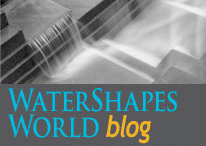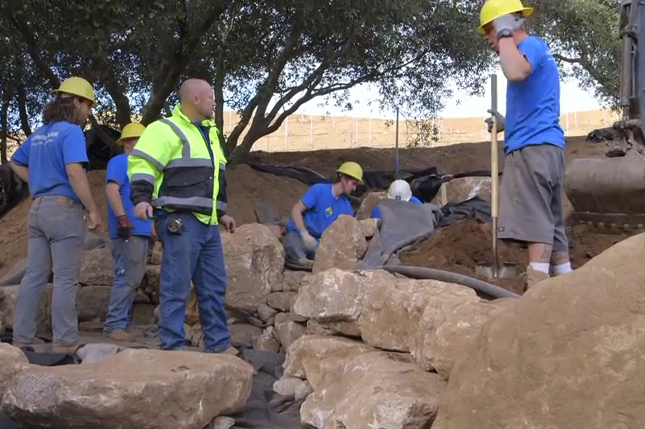ARTICLES
Advance Search
Aquatic Health
Aquatic Health, Fitness & Safety
Around the Internet
Aquatic Culture
Aquatic Technology
Artful Endeavors
Celebrity Corner
Life Aquatic
Must-See Watershapes
People with Cameras
Watershapes in the Headlines
Art/Architectural History
Book & Media Reviews
Commentaries, Interviews & Profiles
Concrete Science
Environment
Fountains
Geotechnical
Join the Dialogue
Landscape, Plants, Hardscape & Decks
Lighter Side
Ripples
Test Your Knowledge
The Aquatic Quiz
Other Waterfeatures (from birdbaths to lakes)
Outdoor Living, Fire Features, Amenities & Lighting
Plants
Ponds, Streams & Waterfalls
Pools & Spas
Professional Watershaping
Structures (Editor's Notes)
Travelogues & History
Water Chemistry
WaterShapes TV
WaterShapes World Blog
Web Links
Around the Internet
Aquatic Culture
Aquatic Technology
Artful Endeavors
Celebrity Corner
Life Aquatic
Must-See Watershapes
People with Cameras
Watershapes in the Headlines
In my career, I've applied lots of fine finishes to swimming pools, spas, fountains and other types of waterfeatures. Most often we work with glass tile, but we also keep our hands in a variety of ceramic or porcelain tiles, various mosaics and, generally, what most would call classy, top-flight materials. No two projects are ever quite the same, but the procedures we follow are: In every case, we at Rock Solid Tile (Calabasas, Calif.) end up having to work through imperfections in the concrete shells left for us by builders and their concrete crews - and that's true even if they're experienced and have
For most of my life, I've been lucky to live within easy driving distance of a bunch of great national parks. Yosemite, Sequoia, Joshua Tree - the names alone flood my mind with memories of towering waterfalls, raging rivers, incredible landscapes, amazing rock formations and campfires that couldn't quite keep the cold at bay. In all my visits through the years, I've seen these "neighborhood" parks as naturalistic-design laboratories, as settings in which careful observation influences the work, fills the spirit and send watershapers back to the drawing board with all sorts of general ideas that might be of use down the line. Conceptual and visual treats, in other words - the stuff of inspiration. Last month, my wife and I ranged a bit farther afield than usual, hopping a plane to visit Yellowstone National Park. I have to say that the experience completely altered my sense of what a "naturalistic-design laboratory" might be. In this one park, I saw more
Once a new swimming pool is filled with water and turned over to its owners, the designer and builder have completed their work: Let's assume that the results have met or exceeded the clients' expectations and that everyone is pleased by the outcome. If all has truly gone well, little will occur in subsequent weeks to change the general sense of
'If you ask my employees,' wrote Bruce Zaretsky in starting his July 2010 On the Level column, 'they'll tell you that I'm an unrelenting pain in the neck - a real tyrant. That's because I'm always asking nagging sorts of questions such as, "Why isn't this project finished yet?" or "How much longer is this going to take?" or "Can you speed things up?" 'My questions, of course, are somewhat unfair. . . . But I have no reluctance to come across as a tyrant
I came across this news item a couple weeks back and have wanted to share it with you ever since. Written by Suzanne Perez Tobias for the May 24 edition of the Wichita Eagle, it's about one person's response to the Kansas legislature's decision to prevent the state's needy citizens from using any public assistance money to go to public
What Do a Japanese Zoo's Elephants Do After Swimming in Their New Pool?
It's rare, but it happens: Every once in a while, a client's desires align perfectly with the capabilities of a watershape designer and builder - so much so that the collaboration becomes a study in how powerful creative harmony can be. This sort of synergy was a hallmark of the hillside project under discussion here. Early in the process, we were brought aboard to work on an unusually large spa as well as a small
Maybe it has something to do with the fact that I can sometimes look like a rock outcropping myself: Whatever it is, I love working with big chunks of stone in my pond projects. More than any single design element I can deploy, there is no other component that's more important when it comes to making my work look as though it's been there
I started out on the construction side of the pool industry nearly 20 years ago. Back then, I probably experienced the building process a good 500 times, picking up insights into what determined the level of success of each project. As time passed, I found myself being drawn to the design side: I saw it as a way to put all of those insights to good use; more important, I knew it was where I could do the most good for homeowners. In making the transition, I
David L'Heureux For much of human history, those with power and wealth have been willing to put both on display in the places they choose to reside. There are palaces and great houses all over the planet, each one testifying to the grandeur of its owner and the talents of the architects and designers brought in to turn grand visions into actual structures and garden spaces. Often, those commissioning these conspicuous projects were members of






















